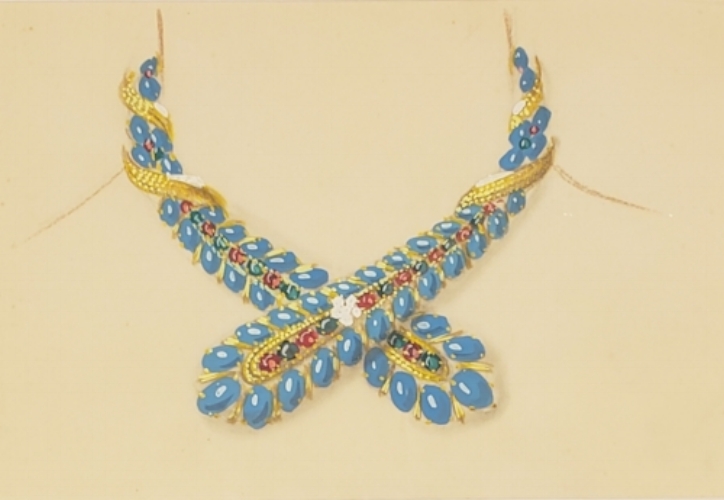The life of any piece of jewelry begins with an idea. Before metal can be cast or stones can be set, a designer must sit down and create an image of what the final product will look like.
It’s not often we get the chance to come face to face with this phase of vintage jewelry production, which is why Gray & Davis is delighted to display, for a limited time, some Cartier hand sketches dating from 1930 to 1950. Created by house designer Edouard Blondeau, these beautiful gouache images of necklaces, rings, bracelets, broaches, and earrings are works of art in themselves.
Then, as now, Cartier was one of the most famous and admired jewelry houses in the world, its work regularly worn by royalty and celebrities. The artisans it employed would have been at the top of their professions, as these illustrations certainly affirm. The designs are elegant and luxurious, full of ornate metalwork and precious stones. In many cases, they cleverly take inspiration from the natural world.
Even more than the content of these illustrations, however, it’s their form that makes them so rare. While plenty of designers still sketch out their ideas, a detailed rendering is just as likely to come from a computer program. And even when done by hand, contemporary sketches just don’t measure up to the intricacy and skill displayed here. The bright color, dimensionality, and impressionistic details of these drawings provide a sense of a finished piece’s substance and luster. Looking at them, it seems like the depicted jewelry leaps off the page.
Platinum and diamond earring, c. 1935
Turquoise, colored stone, and diamond necklace, c. 1945
Gold and colored stone cuff bracelet, c. 1950
This is all the more special because it’s entirely possible that these images do represent the final form of these designs—all we know is that they were never incorporated into the official Cartier line. This leaves two possibilities. Each sketch may have been presented as a potential piece for a Cartier collection, and never put into production. Or, alternately, it may have been designed as a custom piece for a client, who may or may not have had it created. Records don’t indicate one way or the other.
Detail of watermark
We do know that these pieces were created in Cartier’s home city of Paris. These sketches, like all made at the house, bear a company watermark; the order of the cities listed therein changed according to where a sketch was made, with the origin as the first location listed.
Gray & Davis invites you to come visit these sketches in our West Village store—you may even be inspired to take one or two home yourself! And, the next time you look at a piece of jewelry, think about the process it took to get here—and, particularly if it’s an older piece, the additional beauty it might have generated on the way.





